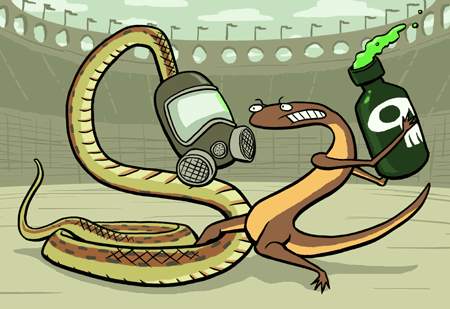When two or more organisms each evolve in response to each other, we call it coevolution. Butch hypothesized that TTX-laden newts were favored because they could avoid getting eaten by garter snakes, and that garter snakes with TTX-resistance were favored because they could survive encounters with deadly newts — in other words, that newt toxicity and snake resistance had coevolved. Specifically, Butch hypothesized that snake/newt coevolution was a bit like an arms race, with each side evolving stronger and stronger weapons and defenses to match those of their opponent. According to this hypothesis, newts would have evolved toxicity in response to selection from snakes, and then the snakes would have evolved resistance in response to selection from newts, which allowed the newts to evolve slightly greater toxicity — in response to which snakes evolved greater resistance…and so on. The story seemed to make sense. If the snakes and newts were engaged in an arms race, it would help explain why the newts were so extremely toxic — but convincing other scientists of this would require not just a logical story, but multiple lines of hard evidence…
Home → Biological warfare and the coevolutionary arms race → Coevolution

